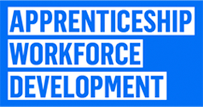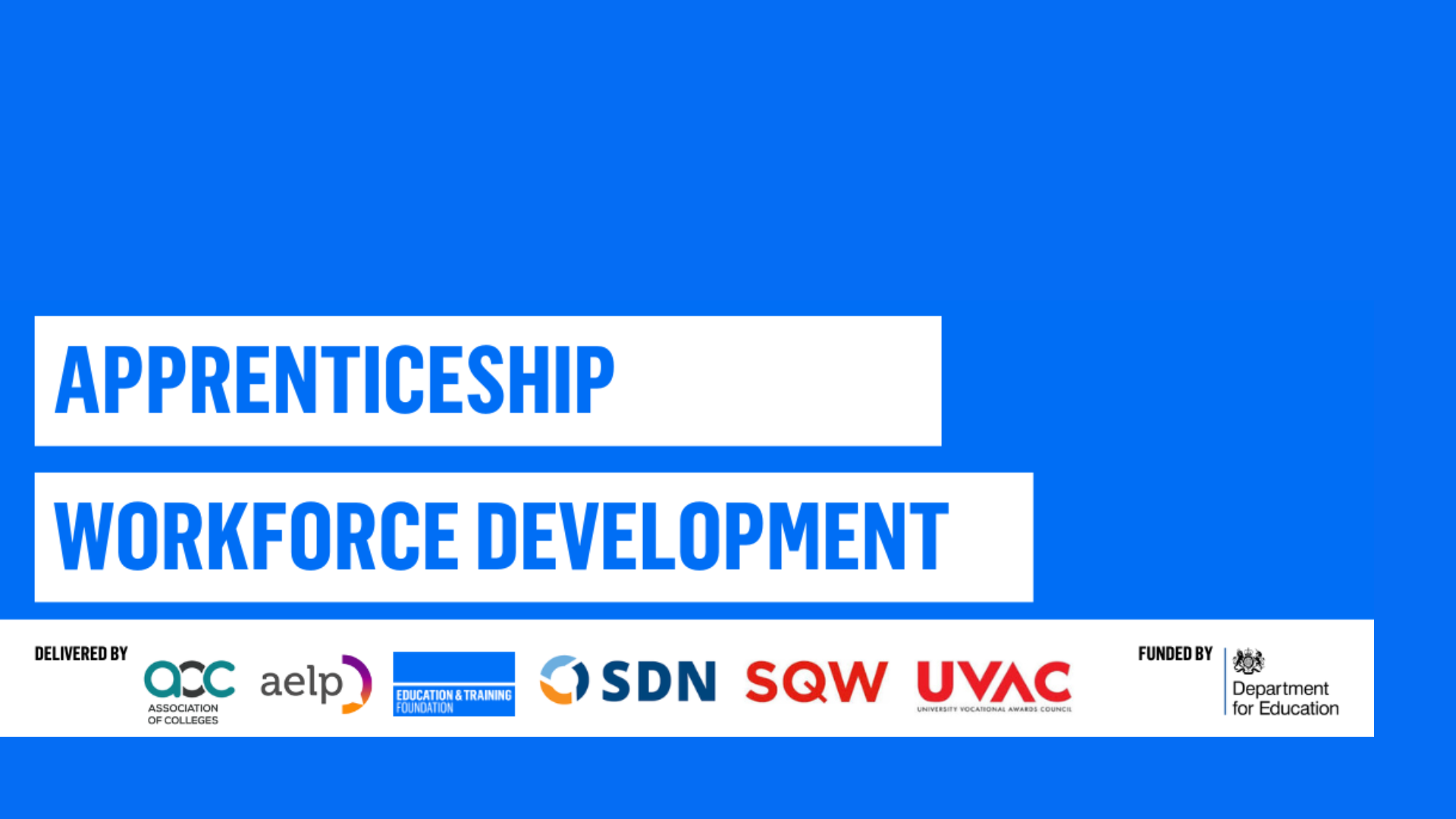5 ways End-point Assessment (EPA) Can Shape Your Role as a Trainer
This blog is written by Strategic Development Network (SDN) as part of the apprenticeship Workforce Development (AWD) Programme. The AWD programme is funded by the Department for Education (DfE), the AWD programme is being delivered by the Education and Training Foundation in partnership with the Association of Colleges (AoC), Association of Employment and Learning Providers (AELP),Strategic Development Network (SDN) and ourselves, University Vocational Awards Council (UVAC).
End-point assessment (EPA) has become an embedded part of our apprenticeship system, but understanding the impact it has on the apprentice’s learning journey and what contributes to their success is an important consideration for providers.
From meticulously evaluating job roles for alignment with standards to crafting individual learning plans and seeing the apprentice through the gateway phase, every step you take is a crucial link in the chain of producing skilled and competent professionals who succeed at EPA.
In this blog, we’ll explore how EPA shapes the on-programme training and your role as a trainer (teacher/tutor/coach).
Covering the KSBs
An apprentice’s job role must allow them to develop all the knowledge, skills and behaviours (KSBs) outlined in the apprenticeship standard and assessment plan. Determining these upfront is vital to make sure the apprenticeship is the most appropriate form of training for the individual. Equally important is the need to communicate this to employers upfront and get their buy-in. The number of apprentices who hit a roadblock because they don’t have exposure to develop all the required KSBs, is a significant reason for apprentices struggling to complete their apprenticeship and pass their end-point assessment.
Holistic Approaches
Initial Assessment
Inadequate initial assessment can often lead to apprentices dropping off the programme or struggling during their EPA. Conducting robust initial assessments – moving beyond a simple process for compliance purposes – that pick up the holistic needs of each apprentice will lay a strong foundation. It’s important to make sure the outcomes of initial assessments are being used by tutors/trainers to shape the learning plan for each apprentice. Understanding the support apprentices need early on will increase the likelihood of apprentices staying on programming and succeeding in their end-point assessment.
Curriculum Design
Rather than designing a learning programme that just ticks off KSBs, think more deeply about how you design your curriculum. How can you structure it so apprentices develop their KSBs in a holistic way and in sufficient depth? Developing their KSBs in this way will leave them better prepared for EPA.
For example, you may support apprentices to develop a particular skill, which then forms part of their evidence for EPA – but also think about how you will help the apprentice to understand:
- why that skill is important
- why it should be conducted a certain way
- how it links to knowledge and behaviours
Discussions like these can better help them to articulate their knowledge and skills in professional discussions or interviews.
Reinforcing Learning On-the-Job
Employers play an important role in reinforcing learning on-the-job, in a way that can specifically help to prepare apprentices for EPA. Consider the following:
- Does the apprentice’s employer have a good understanding of what the EPA looks like?
- Do they know how their role can help apprentices prepare?
- How do you build this into your progress review meetings with the apprentice and employer?
- How might this be reflected in the targets you set?
EPA Preparation
As the end of the programme approaches, there are two important questions to ask as the apprentice.
- Are they competent in the job role (including the KSBs)?
- Are they familiar with what they will face at EPA to demonstrate their competence?
The question of competence isn’t always a straightforward one. How do you measure this? Here are four questions we encourage providers to ask themselves, and discuss with the employer and apprentice too:
- Is there sufficient evidence that the apprentice is ready?
- Does that evidence show the achievement of each element?
- Is there a certainty that achievement is at the level required?
- Do you consider the apprentice to be competent?
Once you, the apprentice and employer have said “yes” to all these questions, you now need to ask yourself:
- Does the apprentice have the knowledge and confidence to demonstrate this at EPA?
- Which KSBs will they need to evidence in which assessment method?
- How might you create mock assessments and practice opportunities to prepare them for what they will experience on the day of EPA?
For some – many perhaps – the advice and examples given here will be things you have considered already. But take the chance to review those apprentices who do not pass the end-point assessment the first time, or who drop off the programme early. Where might some of these areas be contributing factors?
Take your apprenticeship delivery to the next level
As part of the Apprenticeship Workforce Development (AWD) programme, you can access this upcoming course on Preparing Apprentices for End-point Assessment. The AWD programme is fully funded by the Department for Education (DfE) and this course is free to attend.
The AWD programme supports staff at all levels and roles delivering apprenticeships across Further and Higher Education settings. A wide range of CPD is available for staff across your organisation, which has been specifically developed for apprenticeship providers, to help apprentices stay on programme and achieve their potential.
Preparing Apprentices for End-point Assessment – Delivery staff – 16 July
In this course, you’ll explore how the preparation of apprentices for their end-point assessment contributes directly to retention, satisfaction and success. You will explore the challenges presented by EPA and identify the specific indicators that EPA preparation may be a contributor to withdrawals or satisfaction during an apprenticeship.
Using good practice models and responding to the scenarios faced by providers, you will know how to identify and address each issue and create an immediate plan, delivering improved satisfaction, achievement and retention.
Join this AWD course to:
- Identify high-risk withdrawal triggers in apprenticeship data and apprentice behaviours, and explore how to mitigate these.
- Deliver practical interventions – create an immediate intervention action plan for your organisation that addresses apprentices at risk of failure or withdrawal.
- Consider a range of tactical approaches to secure learner, employer and EPAO commitment and engagement in the changes required
- Explore how to apply and embed monitoring and reporting structures for EPA to make sure that interventions are achieved.
It is FREE to register and complete this course.
This course is delivered via live Zoom sessions. Places are limited, so please make sure you can attend before you enrol.
Register and view the full AWD course catalog here.
IN OTHER LATEST NEWS

3 days ago, Amanda Danells-Bewley

4 days ago, Amanda Danells-Bewley
NEWS BY CATEGORY
Get our latest news and events direct to your inbox - join our mailing list
Please enter your details below –


